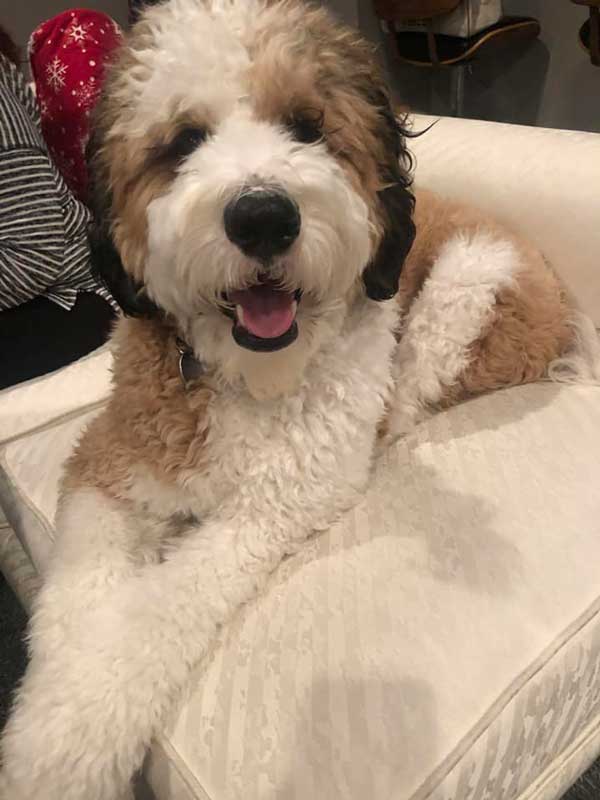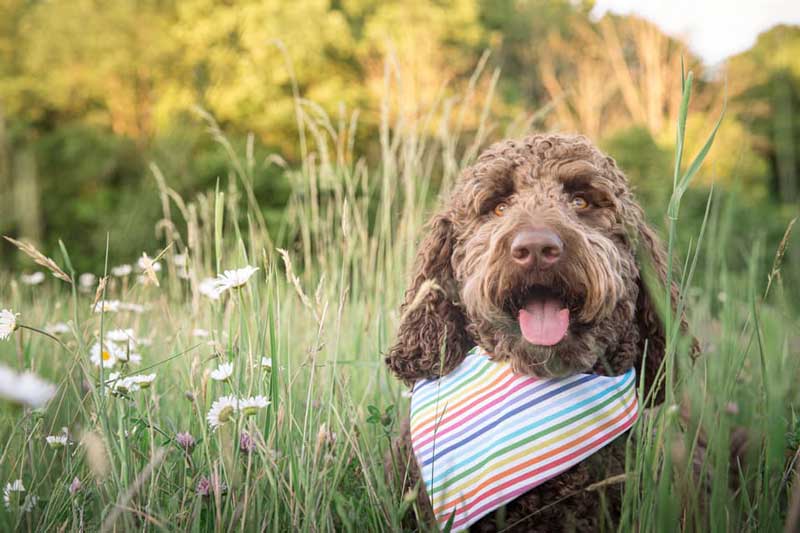Allergies
Understanding Dog Shedding
Shedding is affected by hormonal changes that are tied to photoperiod (day length). When kept mainly indoors, the amount of shed hair is affected by the amount of daylight, which also stimulates hormones and promotes shedding. It is also affected by the temperature of your home and influenced by the pet’s level of nutrition and general state of health. In addition to natural seasonal shedding, a dog may drop coat after surgery, anesthesia, or whelping puppies.
Do Poodles Shed?
The answer is yes, they do, but not nearly as much as most other breeds. Poodles are one of the very best breeds of dog for someone with allergies. They have a single coat, instead of the double coat that most dogs have. This means they don’t have an insulating undercoat. Their single coat grows in curly tendrils. Instead of shedding, the hair wraps around the curls instead of falling out on your floor or sticking to your furniture, that is why a curly coated doodle is also a great choice for those wanting less shedding but please do not be misled and think that a doodle will not shed, they like all dogs will shed to some degree.
If you prefer the ever so loving doodle breed over a pure-bred poodle, you will be happy to hear that the F1b and F1bb Generations do shed minimally and are a great choice if you’re looking to keep allergies at bay and hair off your floors! F1b puppies have 75% poodle in mix and F1bb puppies have 87.5% poodle in the mix, these pups are a great choice if you are worried about allergies and the doodle affecting them. It is possible to enjoy a doodle while minimizing allergies, making it a great option for the entire family.
Dog Shedding and Allergies
All dogs produce dander, but some dogs create a lot less of it. Low-shedding breeds, such as F1b and F1bb Goldendoodles, Labradoodles and Bernedoodles are considered to be more hypoallergenic, which means they don’t produce as many allergens through flaky dead skin and dander as other breeds do.
Dogs are also pollen transmitters and many people are allergic to this powdery substance that helps propagate our trees and flowers. Pets pick it up outside, carrying it home to add to their owners’ allergy woes. The longer the coat is kept, the more of this stuff they can carry.
Tips for handling dog hair
What can an allergy-sufferer do to make living with a dog easier? Here are some helpful tips for you.

Brush Regularly

Vacuum Often

Have a Dog-Free Room

Get an Air Purifier

Wash Bedding

Wash Your Clothes

Limit Fabrics

Wash Your Dog

Wash Your Hands
To keep your doodle from shedding excessively, it is recommended that you bathe them to loosen and remove any dead hair. Approximately once per month, your dog should be bathed to remove dead hair and encourage the growth of new hair. As a result, their skin will remain clean and healthy. When shampooing and conditioning your dog, make sure that the products you use are good quality and are formulated for pets. It is recommended to avoid the use of shampoo for humans when washing your dog. Using these shampoos for your dog can be too harsh for their skin and coat, as they can remove the natural oils that are present in them. The shampoo and conditioner should be thoroughly rinsed from your dog’s coat and skin to make sure that no cleansing agents are left behind. If any residue is left behind, it can cause your dog’s skin to itch and cause dryness to develop.




